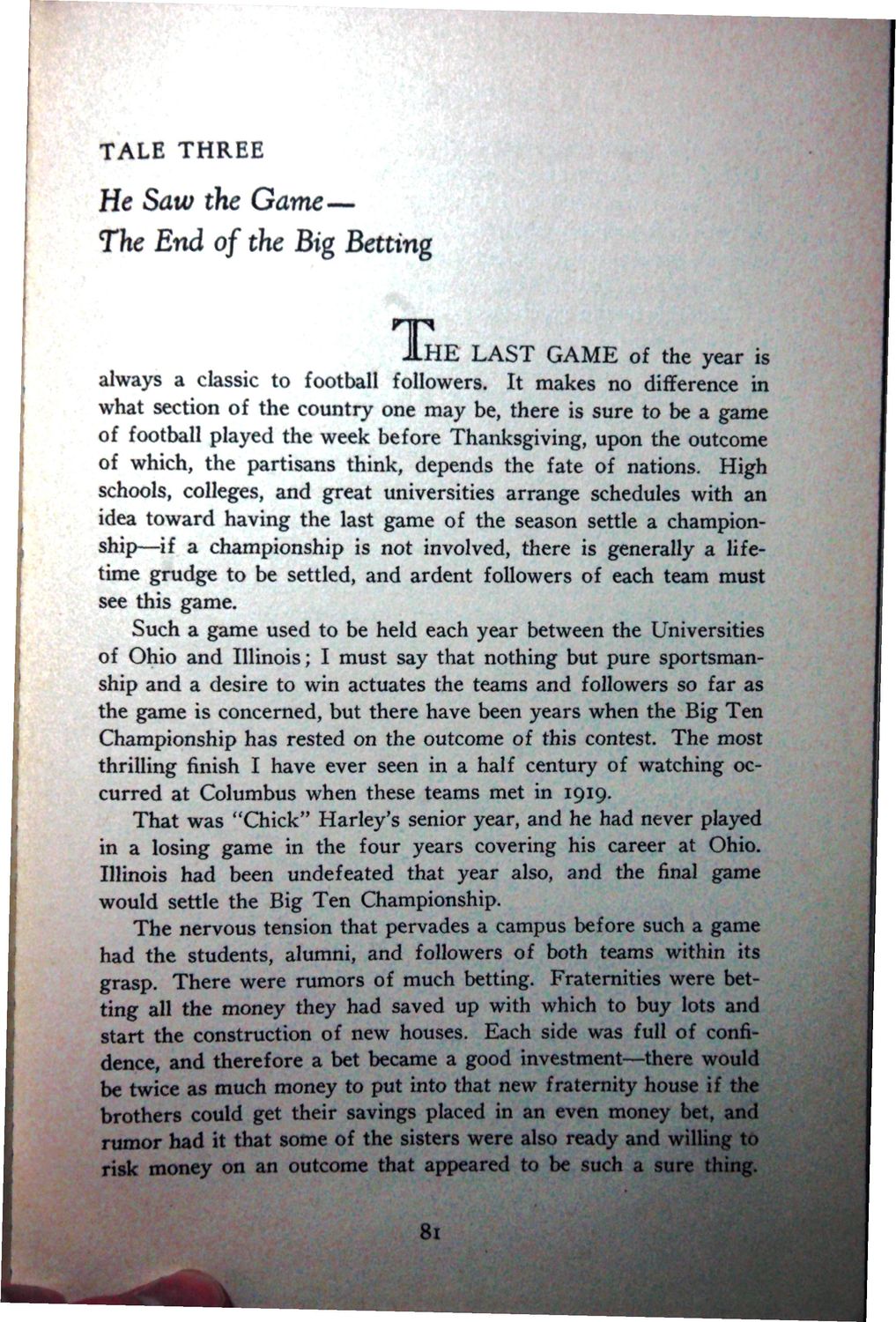| |
| |
Caption: Book - Banks of the Boneyard (Charles Kiler)
This is a reduced-resolution page image for fast online browsing.

EXTRACTED TEXT FROM PAGE:
TALE THREE He Saw the Game— The End of the Big Betting THE LAST GAME of the year is always a classic to football followers. It makes no difference in what section of the country one may be, there is sure to be a game of football played the week before Thanksgiving, upon the outcome of which, the partisans think, depends the fate of nations. High schools, colleges, and great universities arrange schedules with an idea toward having the last game of the season settle a championship—if a championship is not involved, there is generally a lifetime grudge to be settled, and ardent followers of each team must see this game. Such a game used to be held each year between the Universities of Ohio and Illinois; I must say that nothing but pure sportsmanship and a desire to win actuates the teams and followers so far as the game is concerned, but there have been years when the Big Ten Championship has rested on the outcome of this contest. The most thrilling finish I have ever seen in a half century of watching occurred at Columbus when these teams met in 1919. That was "Chick" Harley's senior year, and he had never played in a losing game in the four years covering his career at Ohio. Illinois had been undefeated that year also, and the final game would settle the Big Ten Championship. The nervous tension that pervades a campus before such a game had the students, alumni, and followers of both teams within its grasp. There were rumors of much betting. Fraternities were betting all the money they had saved up with which to buy lots and start the construction of new houses. Each side was full of confidence, and therefore a bet became a good investment—there would be twice as much money to put into that new fraternity house if the brothers could get their savings placed in an even money bet, and rumor had it that some of the sisters were also ready and willing to risk money on an outcome that appeared to be such a sure thing. t 81
| |